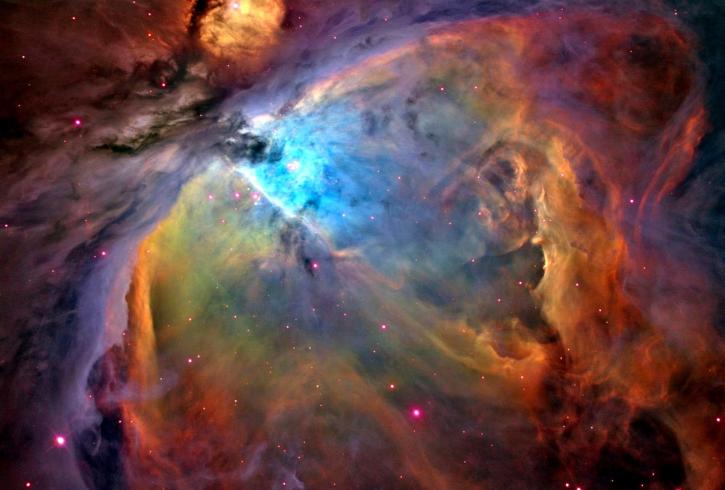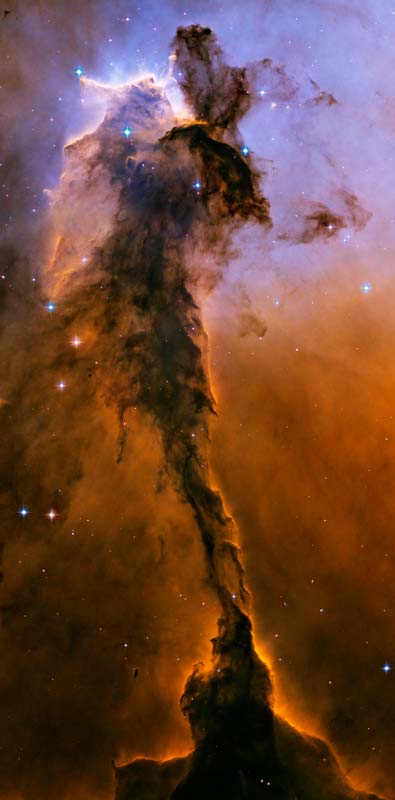die Sternenkönigin M16
Space is something that fascinates many as humans are naturally curious and the cosmos is the biggest mystery, because unless humans become space-faring there will always remain unanswered questions such as where we came from,where we are going,why is the universe organized as it is?Are we alone? And how physics works under conditions which are impossible to recreate on Earth.
This site is to create awareness about various different spacial entities and also to make everyone realize how insignificant the human physical existence is,and how great the human mind, with an intelligence that is now embracing a dazzling range of phenomena,from the astronomically large to the infinitely small.
Astronomy has always been my passion since my childhood. I started looking at the pictures in astronomy books before I could even read. The pictures were beautiful,fascinating and intriguing. As I grew up I wanted to know all about what those pictures meant.I am still learning. Perhaps i like astronomy because we are personally a way of the Universe experiencing itself,or that we are all made of star-stuff,as Carl Sagan so elegantly put it. Ok, I will let you in on a little secret….. this is my secret obsession! I love to read about star and different elements of our magnificent, mysterious and enchanting universe ! Out all the wonderful creations in universe my personal favorite is Emission Nebulae, well they really are alluring and they do present a captivating sight.
So here somethings for you....
Nebulae can also result from the end stages of stellar evolution. In this case they are present as either a planetary nebula or a supernova remnant depending on the mass of the dying star.
But there are millions and billions of nebulae out there in the ever expanding universe of ours but out all these the one that I personally find very intriguing is the Star Queen nebulae ( It even sounds intriguing) also known as messier 16, M16 or the eagle nebulae.
Messier 16 (M16), the famous Eagle Nebula, is a star-forming nebula with a young open star cluster located in Serpens. M16 lies near the borders with the constellations Sagittarius and Scutum. The nebula is best known for the Pillars of Creation region, three large pillars of gas famously photographed by Hubble in 1995.




Enjoy the view while you can. Sadly, data from other telescopes has shown that the Pillars and Spire are likely already gone, victims of a massive shock wave from a supernova explosion that happened 8,000 to 9,000 years ago. Its light has already gone past us, but the slower-moving shock waves would have taken thousands of years more to sweep through the Eagle Nebula, destroying the delicate structures we find so entrancing.
| universe |
This site is to create awareness about various different spacial entities and also to make everyone realize how insignificant the human physical existence is,and how great the human mind, with an intelligence that is now embracing a dazzling range of phenomena,from the astronomically large to the infinitely small.
Astronomy has always been my passion since my childhood. I started looking at the pictures in astronomy books before I could even read. The pictures were beautiful,fascinating and intriguing. As I grew up I wanted to know all about what those pictures meant.I am still learning. Perhaps i like astronomy because we are personally a way of the Universe experiencing itself,or that we are all made of star-stuff,as Carl Sagan so elegantly put it. Ok, I will let you in on a little secret….. this is my secret obsession! I love to read about star and different elements of our magnificent, mysterious and enchanting universe ! Out all the wonderful creations in universe my personal favorite is Emission Nebulae, well they really are alluring and they do present a captivating sight.
So here somethings for you....
 |
| Emission nebulae |
But there are millions and billions of nebulae out there in the ever expanding universe of ours but out all these the one that I personally find very intriguing is the Star Queen nebulae ( It even sounds intriguing) also known as messier 16, M16 or the eagle nebulae.
Messier 16 (M16), the famous Eagle Nebula, is a star-forming nebula with a young open star cluster located in Serpens. M16 lies near the borders with the constellations Sagittarius and Scutum. The nebula is best known for the Pillars of Creation region, three large pillars of gas famously photographed by Hubble in 1995.
 |
| Pillars of creation |
 | |||
| Eagle nebula's stellar spire |
The Eagle Nebula suddenly burst upon the world’s collective consciousness in 1995, when the Hubble Space Telescope focused its attention on a dark nebula in the center of the Eagle, which you can see in the photo at the top of this post.

 |
| Star queen nebula |
The dark protrusions of dense gas were found to be the site of new star and solar system formation, and the resulting photograph became known as the Pillars of Creation and gave most people their first view of new stars and solar systems at the dawn of their creation.

Similar areas, such as the Stellar Spire on the left side of the Eagle, are also forming new stars, through a combination of processes. The cold, mostly hydrogen, gas of the nebula has already fueled the formation of a series of young, hot stars. As the gas continues to collapse under its own gravity into the dark forms we see, new stars and solar systems are formed and continue to grow as they attract more and more gas to them. However, the intense light pressure from the new stars that have formed and their solar winds are eroding away the dense, cold gas pockets, diminishing new star formation and dispersing the nebulae.
At the same time however, the shock waves where the light and solar wind impacts the cold gas, heat and compress some of the cold gasses at the same time, resulting in a new set of star forming environments.
If you love watching the sky, but the only stars you really get to see are those on Van Gogh’s painting, you’re probably living in Delhi. The rising levels of pollution in the Capital are making a sky full of stars seem like a distant dream. But with astronomical observatories in the city, however, you can correct this fault in your stars, without having to travel to the hills
As for me, I am very pleased I saw these structures through ‘scope, a VX 6" 150mm f/8 (which could be easily accessed at Nehru planetarium ), especially given that they are located around 7,000 light-years away, and the Stellar Spire is roughly 9.5 light-years (~ 9 trillion kilometers) tall – about twice the diameter of our solar system. In seeing them in the heavily light-polluted Delhi , I’m doing very well. And for approximately $10,000,000,000 less than the Hubble telescope cost, which makes parents very happy too!
Enjoy the view while you can. Sadly, data from other telescopes has shown that the Pillars and Spire are likely already gone, victims of a massive shock wave from a supernova explosion that happened 8,000 to 9,000 years ago. Its light has already gone past us, but the slower-moving shock waves would have taken thousands of years more to sweep through the Eagle Nebula, destroying the delicate structures we find so entrancing.
The light of that destruction is already on its way to us, so in a few thousand years, people will be seeing a very different Eagle in the ever-changing sky.
Comments
Post a Comment